

 STUART JORDAN explores the two Lötschberg tunnels and the locomotives built to run through them.
STUART JORDAN explores the two Lötschberg tunnels and the locomotives built to run through them.
The Re460 locomotive class was designed by the Italian company Pininfarina, and the units were constructed by SLM and ABB. They entered service in the mid-1990s as a multi-purpose locomotive. However, they are currently only used by SBB to pull passenger trains. These are often IC2000 double-decker trains on InterCity and InterRegio services.
The Re465 Locomotive is a modification of the SBB-produced Re460 locomotive that was produced especially for BLS (Bern-Lötschberg-Simplon) railway. The modifications made for BLS include higher starting tractive effort by having individual axle control instead of the individual bogie control on the Re460. This gives it a maximum tractive effort of 320kN, compared to the 275kN of the Re460.
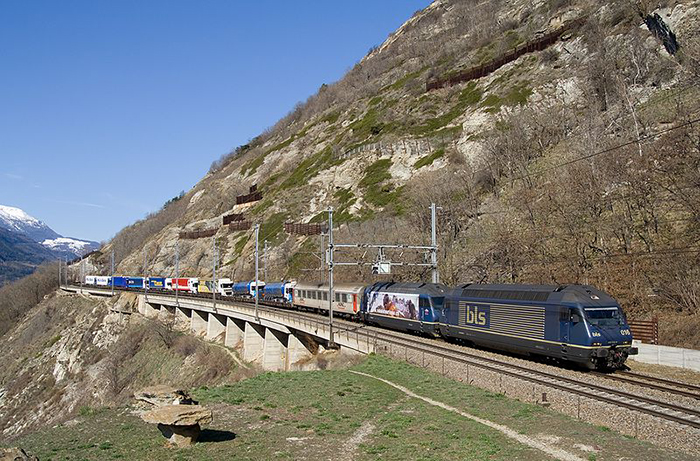
BLS Re465 (in the older dark blue livery) pulling a 'rolling highway' train over the Lötschberg.
This allows the locomotive to pull heavy freight trains up the steep Lötschberg line, which connects Spiez and Brig through the Lötschberg Tunnel – not to be confused with the Lötschberg Base Tunnel which opened in 2007. Despite the new base tunnel, which is 400m below the other tunnel, there is still congestion on the route caused by a 13-mile single-track section in the base tunnel, which has no passing loops. This means that trains still regularly use the original route for both freight and passenger services.
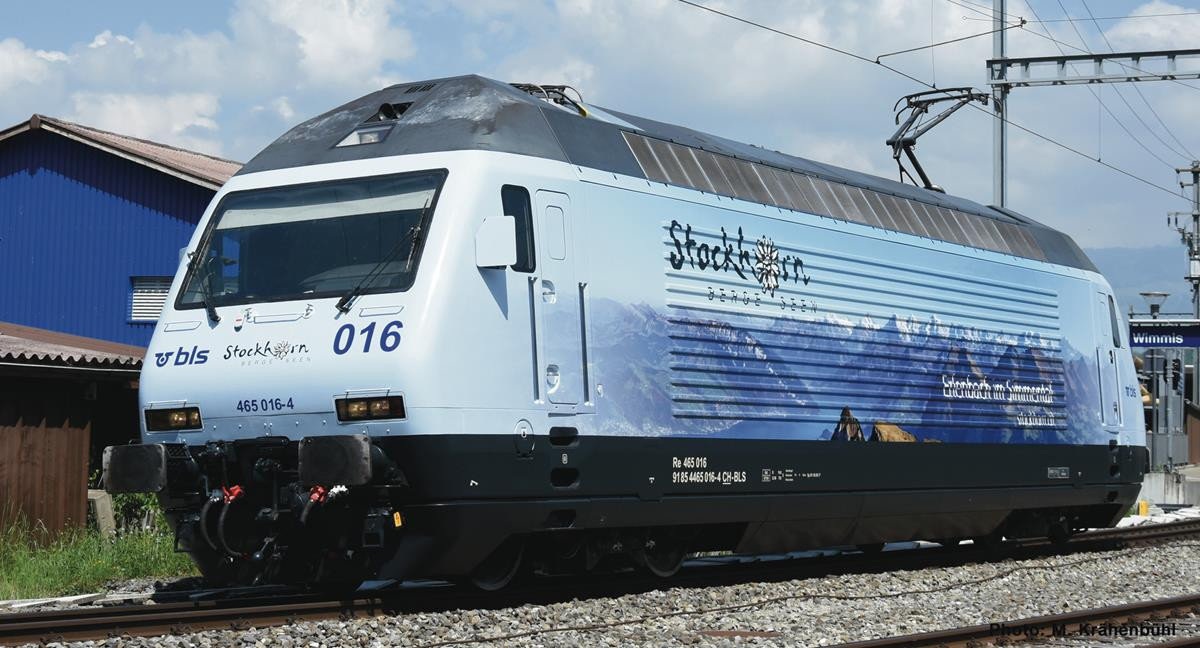
Re465 with advertising image for the Stockhorn Mountain area.
BLS use their Re465s double-headed, sometimes with an additional unit at the rear of the train, to take heavy freight trains over the Lötschberg. The route is an important link between Germany and Italy, with all manner of freight taken across Switzerland between the two countries. The Re465 is fitted for multiple working, so can couple with the Re425, Re430, Re460, and Re620 if required. Like most Swiss locomotives the Re465 has large flat sides, which are often sold as advertising space.
Construction of the Lötschberg line began in October 1906 with the drilling of the northern portal of the tunnel. A narrow-gauge railway was built up both slopes to the tunnel, to aid with construction. Although originally planned as a single-track line, it was decided during construction that provisions should be made for expansion to double track later. The line through the tunnel was built doubled and changes were made to the track geometry on the approaches to allow for double-track in the future.
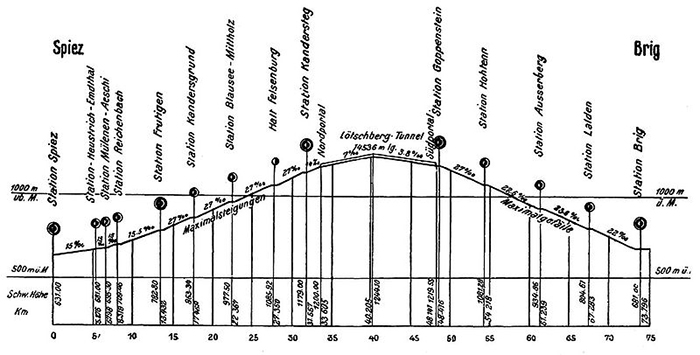
Plan of the Lötschberg line and tunnel, showing average elevation between each point.
The top elevation of the tunnel is 1240m above sea level, the highest point on the Swiss mainline. Electrification of the line was completed in 1913 with a schedule of 16 trains a day including four international expresses. Despite plans being made so early on, doubling of the tracks was not completed until between 1976 and 1992. While this work was carried out, the track level was also lowered to allow clearance for container trains, giving rise to the Purple Route for the higher containers. (Note that all Swiss lines are signalled for bi-directional working so switching between the left and right lines at line speed is common-place. The Purple Route takes advantage of this.)
Map showing the locations of both Lötschberg tunnels and the Simplon tunnel. Click the image to see a larger version.
The later Lötschberg Base Tunnel was constructed as part of the NRLA (New Railway Link through the Alps), along with the Gotthard Base Tunnel. The point of construction was not to relieve the existing Lötschberg line, but instead to ease congestion on the Swiss road network; lorry traffic from northern Europe to southern Europe had increased tenfold between the 1980s and the 2000s. This is in addition to the car-carrying shuttle train from Goppenstein to Kandersteg through the original tunnel.
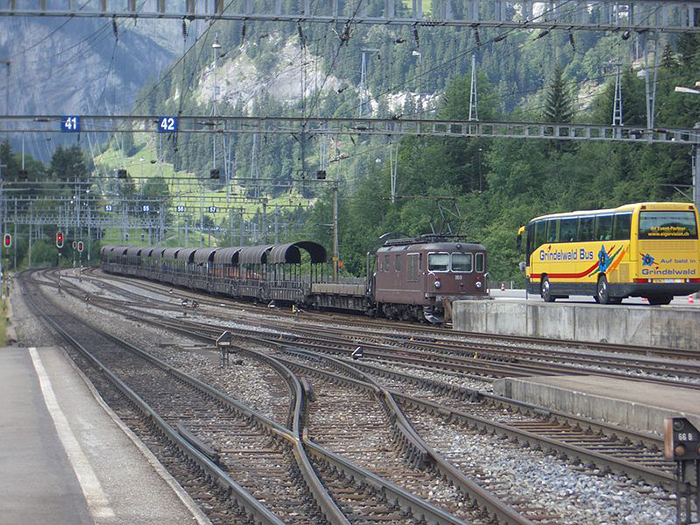
Car Carrying Shuttle Train at Kandersteg, hauled by a BLS Re4/4 Locomotive.
The plan was to construct a ‘rolling highway’ between Germany, where trucks would be loaded onto trains, and Italy. Running between Frutigen, Bern and Raron, Valais, the base tunnel is 21.5 miles long and as previously mentioned, there is a 13 mile single track section. Construction began in 1994 with early drilling taking place, with the full-scale construction commencing in 1999 using a mixture of drilling, blasting, and tunnel boring machines. The tunnel had been fully fitted out by 2006 and testing was carried out for a full year. The opening ceremony was in June 2007 and the tunnel began to be used for freight and international services before later opening for InterCity use. The LBT was the longest land-based tunnel until 2016 when the Gotthard Base Tunnel opened. Both are due to be superseded in 2029 with the completion of the Mont d'Ambin Base Tunnel between France and Italy.
Because of the single-track section, trains scheduled to use the LBT are batched together to run in each direction. Any train that is more than seven minutes late must either wait for the next available window or go over the old line. At its peak, around 110 trains travel through the LBT every day. Warm groundwater drains from the tunnel and is used to heat the Tropenhaus Frutigen, a fishery that produces sturgeon meat and caviar, and exotic fruit in greenhouses.
Using Fleischmann and Roco models, you can reproduce a clay train like those that are pulled over the summit line. These trains are so long that they are double-headed with Re465s and a banker on the rear. Tests have even been done with two locomotives at the rear!
The train can be reproduced in N Scale with the following Fleischmann models:

BLS Re465 Electric Locomotive V
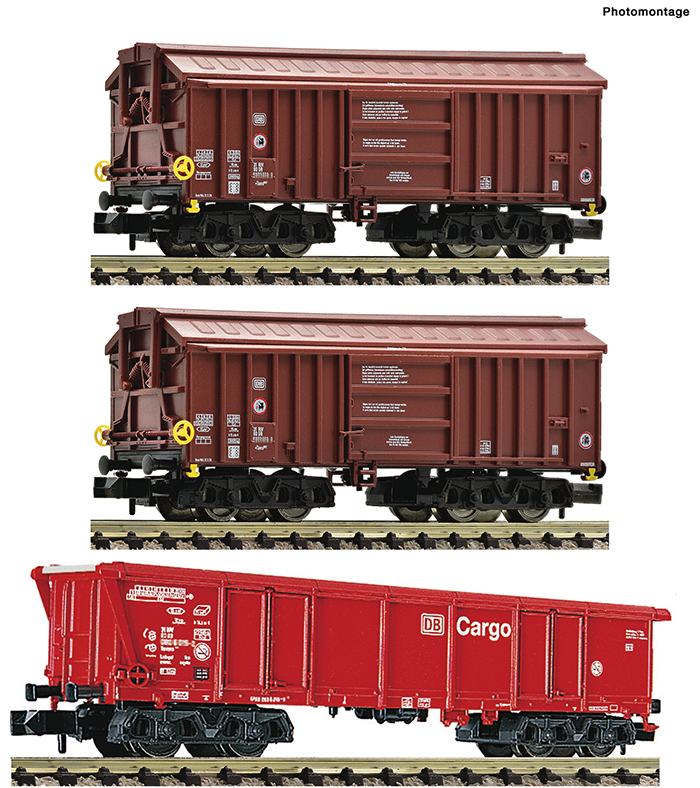
DBAG Tontransportwagen Wagon Set
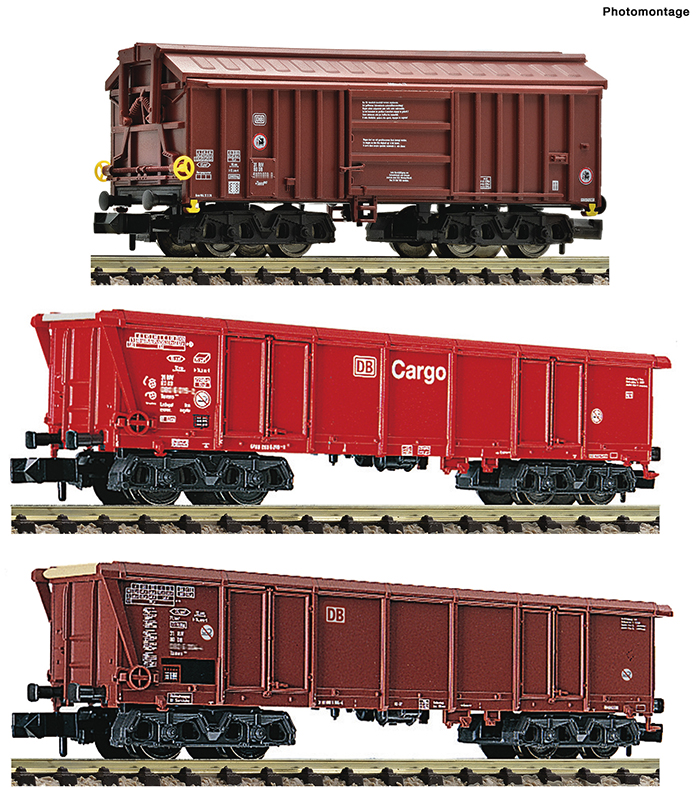
DBAG Tontransportwagen Wagon Set
The same train can be modelled in HO Scale, if it was rerouted over the Gotthard instead.
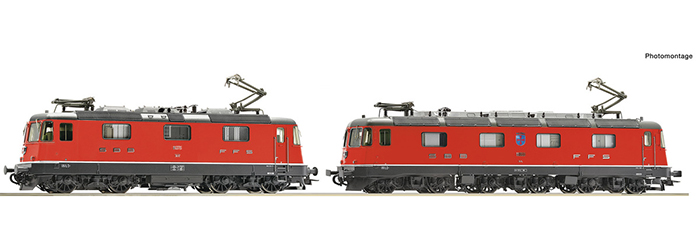
SBB Re10/10 Electric Locomotive IV
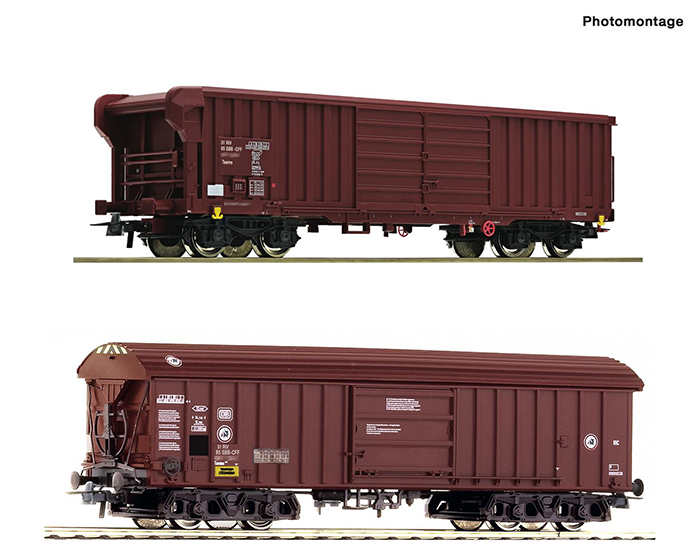
SBB Taehms Clay Wagon Set